Adidas Terrex Speed Ultra
Test Locations: Lake City, Colorado & Logan, Utah
Test Duration: 189 miles
Stated Stack Height (Midsole + Outsole): 32 mm (heel) / 24 mm (forefoot)
Stated Heel-to-Toe Drop: 8 mm
- Stated Features:
Lace closure, Mesh upper with abrasion-resistant weldings and perforated tongue. - Padded tongue and heel tabs for comfort.
Reflective print for visibility. - Boost midsole and Lightstrike cushioning
Gravel Bike-inspired Continental Rubber Outsole
MSRP: $160.00
Size Tested: US Men’s 11.5
Stated Weight per Shoe (US Men’s Size 9): 244 g / 8.6 oz
Blister Measured Weight per Shoe (US Men’s Size 11.5):
- Shoes + Laces: 282 g (left) & 279 g (right)
- Insoles: 19 g (left) & 19 g (right)
- Total: 301 g (left) & 298 g (right)
Reviewer: 6’1”, 145 lbs
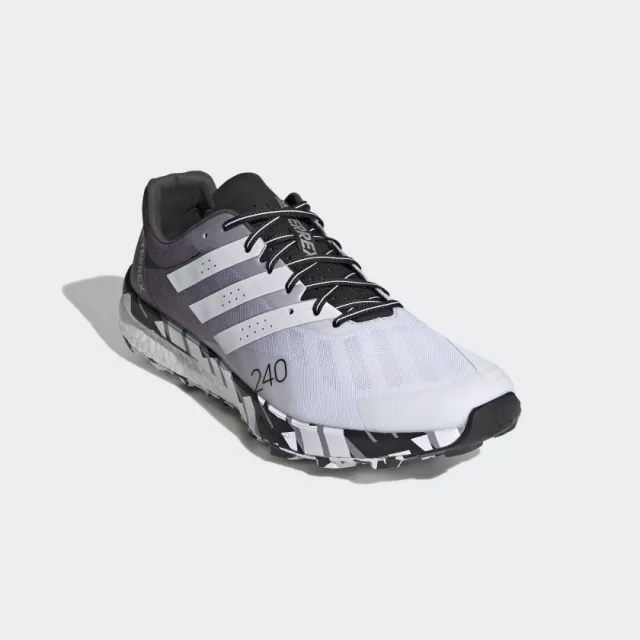
Intro
In my opinion, adidas have had quite a few near-miss trail shoes in the last couple of years. I thought that shoes like the adidas Terrex Agravic Boa or Agravic Flow were very close to being awesome shoes, but they didn’t quite get there for various reasons — sloppy fit, mediocre traction, etc. From my perspective, it seemed like adidas was still ironing out the kinks in their relatively new trail running shoe lineup, and it was just a matter of time before they hit the nail on the head.
And that, at least in my opinion, is exactly what they did with the Terrex Speed Ultra. The Speed Ultra was designed with input from professional ultra-runner Tom Evans, with the intention of putting the best features of many of adidas’ previous shoes together into a lightweight, fast, race-ready shoe. I’ve run just shy of 150 miles in the Speed Ultra so far, and I think that adidas largely succeeded in that goal. As with any shoe, the Speed Ultra does have its quirks, but overall it’s hands down one of the best shoes I’ve recently tested. In this review I’ll break down why, while also highlighting a few of the things that I think would make the Speed Ultra even better.
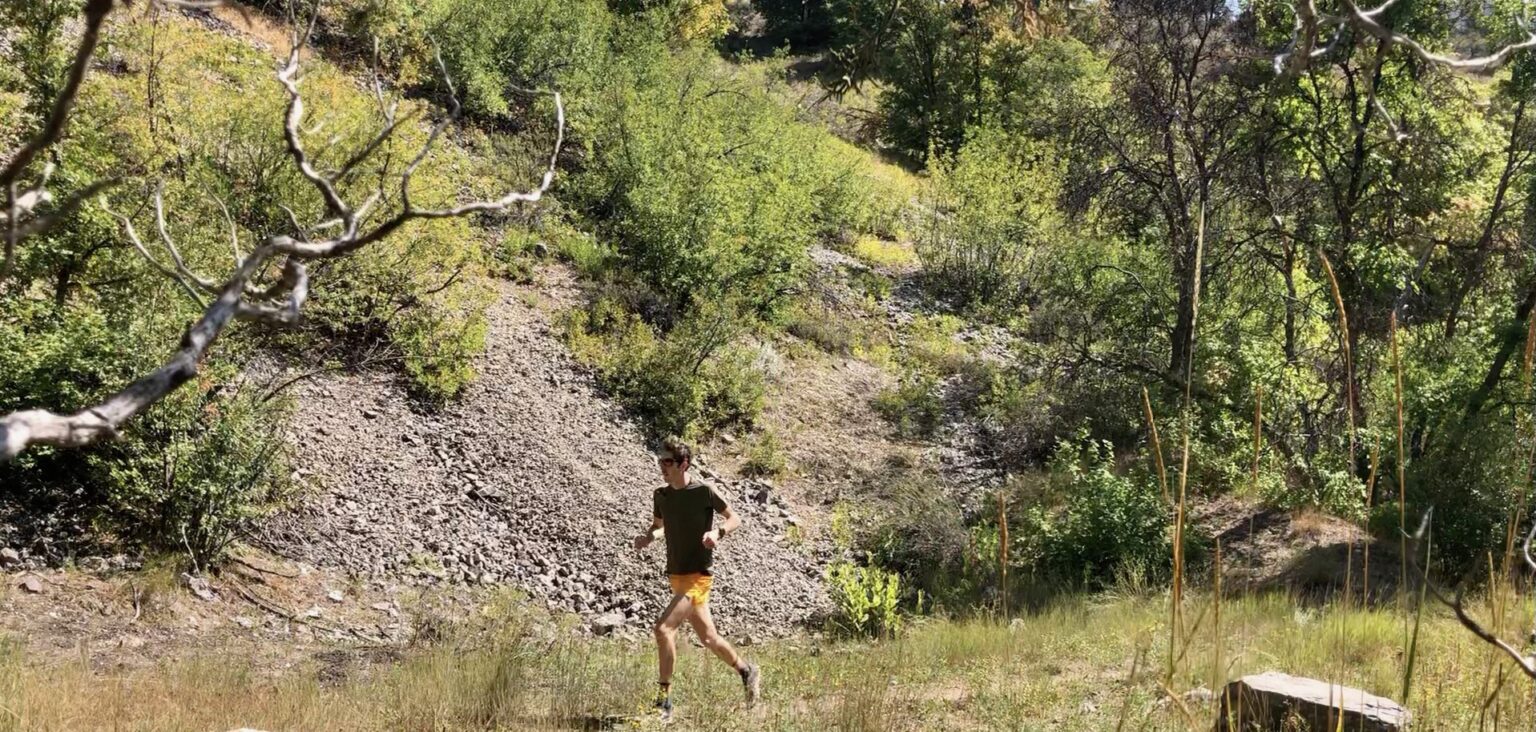
Fit
The best way to make sure the Speed Ultra’s fit works for you is to try it on in person — but if you can’t, I’ll provide some general context on how the shoe fits my fairly narrow, low-volume feet. For reference, I generally like shoes with a secure midfoot / heel and a bit of extra space in the forefoot to allow for toe splay.
Unlike some of adidas’ other trail shoes, the Speed Ultra seems to run fairly true to size. My usual US Men’s 11.5 feels a bit long and sloppy in shoes like the adidas Terrex Two Ultra Parley, but the Speed Ultra feels just fine in my usual size. Length-wise, it fits very similarly to shoes from brands like Hoka, Altra, or Topo.
Sizing aside, I’ve been super impressed by the Speed Ultra’s fit. As I alluded to in the intro, adidas’ other trail shoes haven’t really worked for my foot shape and fit preferences. They always seemed a little too high-volume, and as a result, sloppy — especially on technical terrain. But the Speed Ultra almost feels like it was made to fit my feet, both securely and comfortably. The forefoot is noticeably narrower than a shoe like the Altra Superior 4.5 or Topo Athletic Mtn Racer 2, but it’s also much more spacious through the toe box than the Hoka One One EVO Speedgoat or Zinal. Unlike the EVO Speedgoat, I never feel like my toes are being smashed together on long runs in the Speed Ultra.
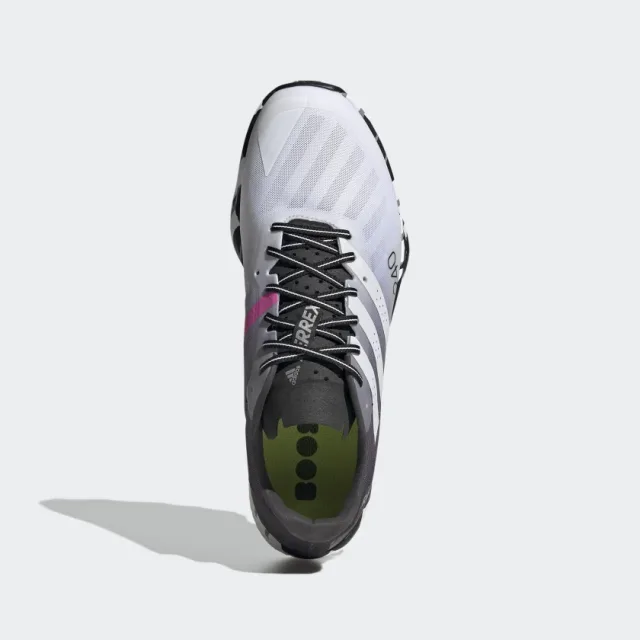
Even better, the Speed Ultra’s midfoot and heel are impressively secure for a shoe with a fairly minimal upper and high-ish stack height. I’ve run into issues with the unstructured, minimal uppers on other lightweight, race-oriented shoes (e.g. the Hoka Zinal), with them feeling a little insecure on technical terrain. In contrast, the Speed Ultra feels locked down and secure, even on super steep / rugged trails. I’d say the Speed Ultra is comparable to a shoe like the La Sportiva Cyclon as far as fit-security is concerned, which is pretty awesome for a shoe that isn’t specifically designed for technical terrain.
Overall, I think the Speed Ultra hits a nice middle ground as far as fit goes. It isn’t quite as spacious as shoes from brands like Altra or Topo, but it’s way more secure on technical terrain — and it still provides much more toe box space than shoes from Hoka or La Sportiva. For my fit preferences, that makes the Speed Ultra a pretty ideal shoe for long, technical runs and races. The Speed Ultra might still feel a little narrow if you have wide feet and / or are used to the extra-wide toe boxes of shoes like the Altra Lone Peak. But for those of us with narrow to average-width feet, I think it provides an excellent blend of comfort and security.
Weight
In my opinion, weight is another strong point for the Speed Ultra. adidas gives a stated weight of 241 g / 8.6 oz for a US Men’s size 9, which is pretty respectable for a shoe with as much cushioning as the Speed Ultra (32 mm / 24 mm stack height). For a more direct comparison, here’s how the Speed Ultra compares to some other lightweight, medium-cushion trail shoes from other brands (all stated weights are based on a US Men’s size 9):
176 g / 6.2 oz — Salomon S/Lab Pulsar
241 g / 8.5 oz — Altra Superior 5.0
241 g / 8.5 oz — Hoka One One Zinal
241 g / 8.6 oz — adidas Terrex Speed Ultra
258 g / 9.1 oz — Hoka One One Torrent 2
269 g / 9.5 oz — Brooks Catamount
270 g / 9.5 oz — Inov-8 Terraultra G 270
283 g / 10.0 oz — Nike Zoom Terra Kiger 7
286 g / 10.1 oz — Topo Athletic Mtn Racer 2
So compared to the competition, the Speed Ultra is pretty close to the front of the pack from a weight perspective. You can definitely find lighter shoes if you’re really prioritizing minimum weight, but in my experience, the Speed Ultra is definitely light enough to feel fast, efficient, and not at all cumbersome. I also think the Speed Ultra is one of those shoes that feels lighter than it is on paper — the secure fit I described earlier definitely helps, as does the shoe’s excellent energy return. Out on the trails, I think the Speed Ultra actually feels lighter than shoes like the Hoka Zinal or Altra Superior, even though both of those shoes are technically lighter on paper. Long story short, the Speed Ultra is light. And it feels light. That’s always a win in my book, and I think it definitely contributes to the shoe’s overall versatility (more on that later).
Upper
No shoe is completely perfect, and I think the Speed Ultra’s upper is probably the area that has the most room for improvement. The Speed Ultra uses a lightweight, fairly minimal mesh material for most of the upper, with a few welded overlays in the midfoot to add structure. There’s also a bit of extra cushioning in the heel cup and tongue for added comfort. In my experience, the Speed Ultra’s upper is plenty breathable and fits extremely well, but isn’t necessarily the most comfortable on particularly long runs.
Even with the bit of extra padding, the heel cup and tongue are a little on the thin side. Initially, I was a little concerned that I’d get some rubbing / blisters from the fairly unforgiving heel cup; that hasn’t happened so far, but my heels and the tops of my feet do get a little sorer in the Speed Ultra on particularly long runs (over 3-4 hours) than they would in a shoe like the Altra Timp 2, which has a thicker heel cup and tongue. Honestly, I think that a little less comfort is a pretty good tradeoff to keep the Speed Ultra’s weight down, but just know that the upper probably won’t feel quite as soft and plush as many other shoes on the market.
I’ve also noticed that the Speed Ultra’s upper and laces tend to loosen up quite a bit after creek crossings. That’s the case for pretty much every shoe I’ve ever run in, but it seems to be especially pronounced in the Speed Ultra. Again, not a deal-breaker by any means, but as long as I’m being nitpicky it’s worth bringing up.
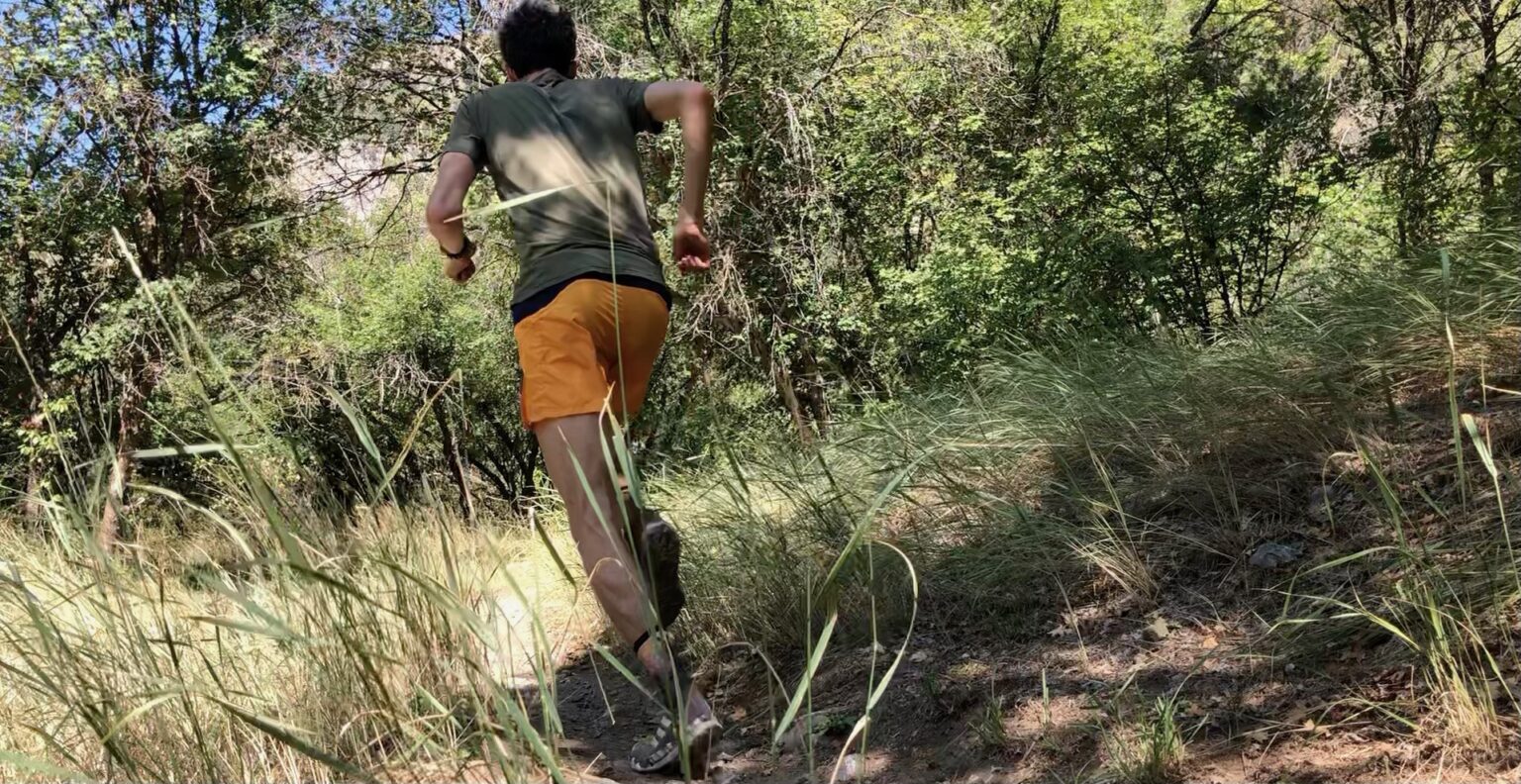
Finally, much like the Hoka Zinal, I’m pretty concerned about the durability of the Speed Ultra’s lacing system. The Speed Ultra does have more structure in the midfoot (in the form of synthetic overlays) than the Zinal, but those overlays don’t provide a whole lot of reinforcement for the lace eyelets themselves. One of the eyelets is already well on its way to ripping out after just ~150 miles of use. To be fair, I definitely crank down the laces pretty hard most of the time, but still, I’d happily sacrifice a couple extra grams for some extra eyelet reinforcement and the potential to extend the upper’s life by a few hundred miles.
While I do think there’s some room for improvement, I’m still happy with the Speed Ultra’s upper overall — it fits extremely well, breathes well in hot weather, and hasn’t caused any serious hot spots or blisters. Could it be slightly better? Sure. But as-is, it still does its job well enough to avoid hindering the shoe’s overall performance.
Midsole
Aside from the fit, the Speed Ultra’s midsole is definitely one of my favorite parts of the shoe. The Speed Ultra has two different types of midsole foam. In the heel, there’s a wedge of adidas’ Boost foam that tapers forward from the back of the shoe to just behind the ball of the foot. On top of that is a full-length piece of adidas’ “LightStrike” EVA foam. The LightStrike foam seems to be pretty similar to moderately firm EVA compounds from other brands (e.g., Altra’s “A-Bound” material), while the Boost material is a TPU-bead-based compound similar to the PWRRUN+ foam found on the Saucony Switchback 2.
In general, TPU-bead-based compounds like Boost are a little heavier than EVA-based foams, but provide a pretty awesome combination of soft cushioning and excellent energy return. In my experience, shoes with full-length TPU midsoles (e.g. the adidas Terrex Two Ultra Parley) often end up feeling a little cumbersome because of the denser midsole. But the combined Boost / LightStrike midsole on the Speed Ultra manages to reap the benefits of adidas’ Boost material while maintaining an extremely light, efficient feel.
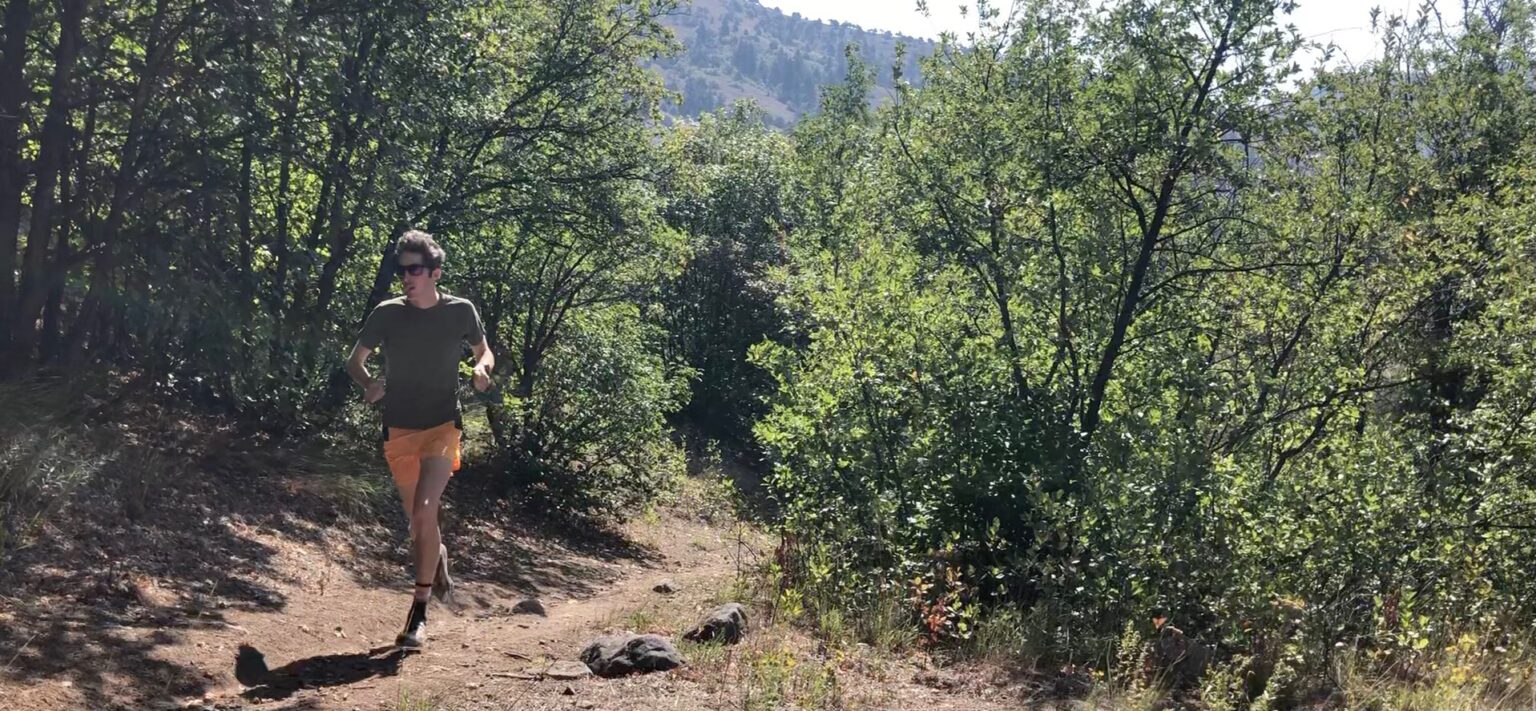
On the trail, the Boost material in the Speed Ultra’s heel provides a surprisingly soft landing, then works in concert with the moderately firm LightStrike foam on top of it to provide excellent energy return. Somehow, that makes the Speed Ultra feel extremely efficient and fast while also somehow feeling way more cushioned than I’d expected. It still isn’t as plush as a truly maximal shoe like the Hoka EVO Speedgoat, but the Speed Ultra does feel much softer and more cushioned than the Hoka Zinal or Topo Mtn Racer 2 — even though all three shoes have very similar stack heights.
In my opinion, the Speed Ultra’s combination of cushion and speed makes it extremely well-suited to long interval workouts and ultra-distance trail races. There’s enough cushion that my feet don’t feel overly beat up after multiple hours in the shoe, but the Speed Ultra also feels much faster and more efficient than other similarly cushioned shoes.
Outsole
The Speed Ultra’s outsole is also a major improvement over other adidas Terrex trail shoes I’ve used. According to adidas, the Speed Ultra’s tread pattern was inspired by Gravel Bike tires. That actually doesn’t sound all that impressive for a shoe that’s designed to handle much more than just gravel roads, but regardless, it works very well in my experience. The Speed Ultra has a series of fairly low-profile, rectangular lugs arranged in a chevron pattern. Like adidas’ other trail shoes, the Speed Ultra uses a Continental rubber outsole compound.
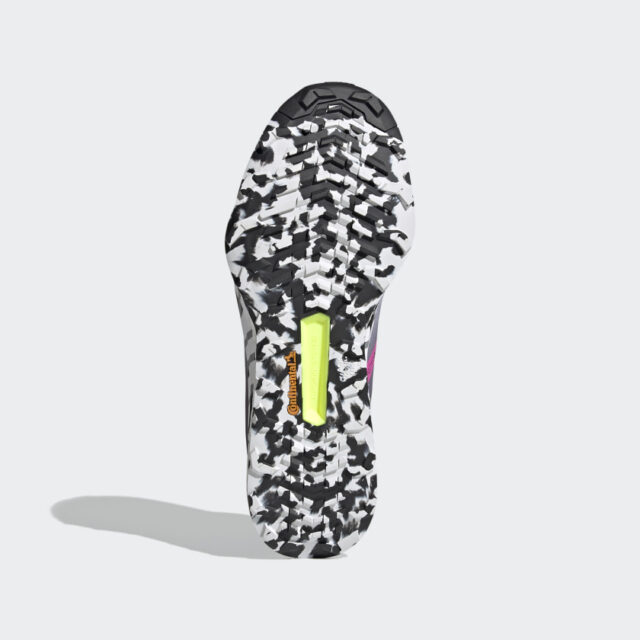
Out on the trails, the Speed Ultra’s fairly unassuming outsole does an impressive job of providing solid traction in a wide variety of settings. Obviously, the Speed Ultra’s fairly small lugs don’t do a whole lot in deep mud, but they do grip well on hard-packed trails, wet and dry rocks, and just about everything else I’ve gotten them on. I’ve been especially impressed by how well the Speed Ultra grips on steep, loose descents. Again, it’s not quite as grippy as a shoe like the La Sportiva Cyclon or Hoka EVO Jawz, but I definitely feel more secure traction-wise in the Speed Ultra than I do in other similar shoes like the Hoka Zinal or Altra Timp 2.0. Much like the rest of the shoe, I think the Speed Ultra’s outsole lends a solid amount of versatility to the shoe’s overall performance — it isn’t burly enough for extremely wet, muddy terrain, but it handles just about every other type of terrain I encounter on a daily basis very well.
On Trail
You probably already have a pretty good sense of what I’m going to say here, but I think it’s worth highlighting again the specific settings in which the Speed Ultra really excels. Over my first 189 miles in the shoe, I’ve used it for everything from shorter, faster interval workouts on mellow terrain to a mountainous, 9-hour, 50-mile trail race in Colorado’s San Juan Mountains. I’ve also put the Speed Ultra to the test on numerous 10-15 mile runs in the mountains around Logan, Utah, most of which involved lots of steep, technical terrain.
Across the board, I’ve been very impressed by the Speed Ultra. As I’ve said throughout the review, the Speed Ultra’s fit hits the perfect balance (for my preferences and feet) between comfort and security. It feels stable on steep, mountainous terrain without sacrificing comfort for longer efforts. Likewise, the Speed Ultra’s cushioning provides a blend of cushion and energy return that’s pretty hard to beat in my opinion — I haven’t found many other shoes that feel as simultaneously plush and fast as the Speed Ultra. The Hoka EVO Speedgoat probably comes the closest, but I think the Speed Ultra beats out the EVO Speedgoat on other criteria — specifically weight and fit.
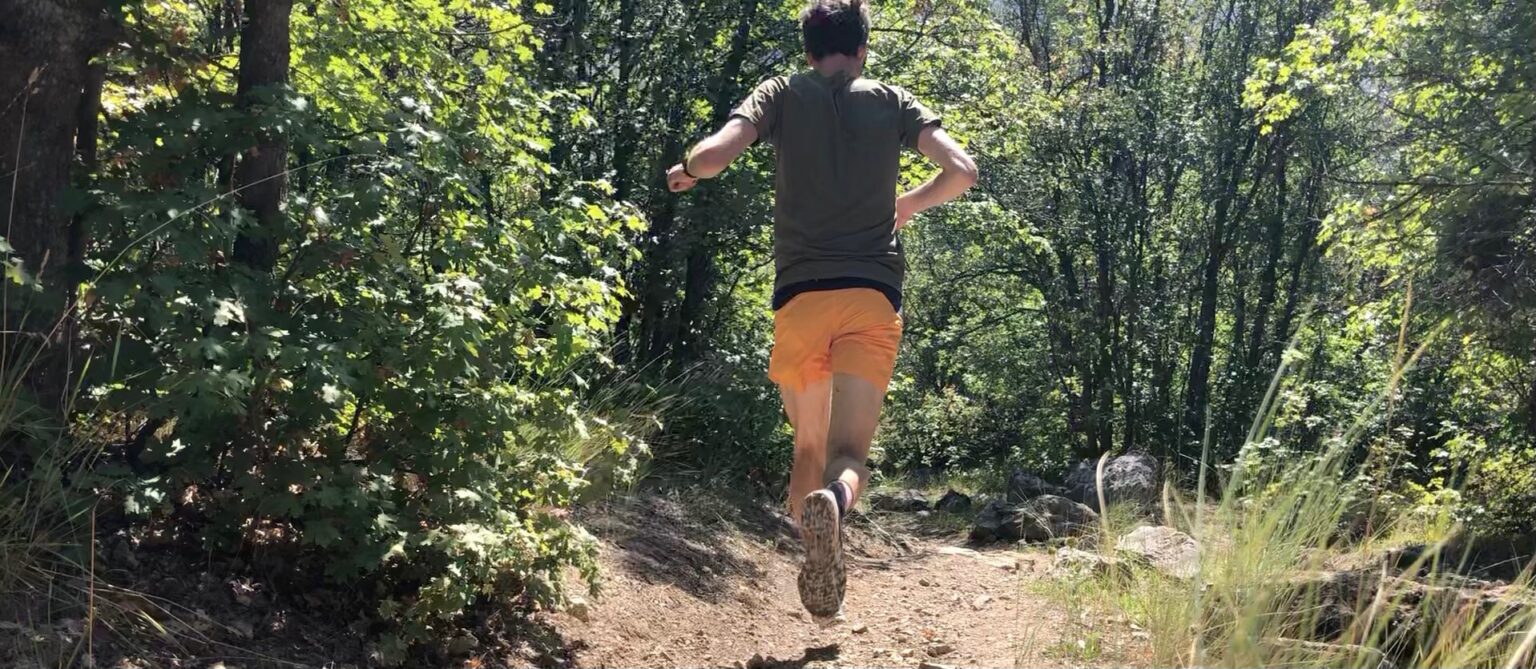
I was also pleasantly surprised by how little I noticed the Speed Ultra’s 8 mm heel-to-toe drop out on the trails. I usually prefer shoes with a 0-6 mm drop, especially for technical and / or steep terrain; I’ve often found that shoes with higher drops feel a little unstable on technical terrain for my running style. With that said, I haven’t felt like the Speed Ultra’s 8 mm drop interferes with the shoe’s performance at all so far — I’m usually a forefoot striker, and I feel like I’m able to run with my usual stride in the Speed Ultra even though its drop is a little higher than I’m used to. I also haven’t noticed the higher drop on technical terrain at all — the Speed Ultra still feels plenty stable to me when the going gets rough. One benefit of the shoe’s higher drop is that I’d expect it’d work well for a wide variety of foot strike patterns. Unlike a zero-drop shoe like the Altra Timp or Inov-8 Terraultra G 270, the Speed Ultra doesn’t feel like it strongly favors a forefoot strike over a heel strike, so I’d guess that it’d still feel good for runners who are used to landing heels-first.
With the exception of the somewhat minimally padded heel cup and tongue that I mentioned in the “Upper” section, the Speed Ultra pretty much checks all of the boxes for a long-distance racing shoe in my book. I also think there’s some room for improvement on the Speed Ultra’s durability (more on that later), but aside from that, all I can say is hats off to adidas for a job well done.
Durability
As I’ve said before, I do have some concerns about the Speed Ultra’s durability. After 189 miles of use, one of the lace eyelets is starting to rip out — and when it does, it’ll make it pretty hard to keep using the shoes. That’s even more of a bummer because aside from that, the Speed Ultra seems to be holding up very well.
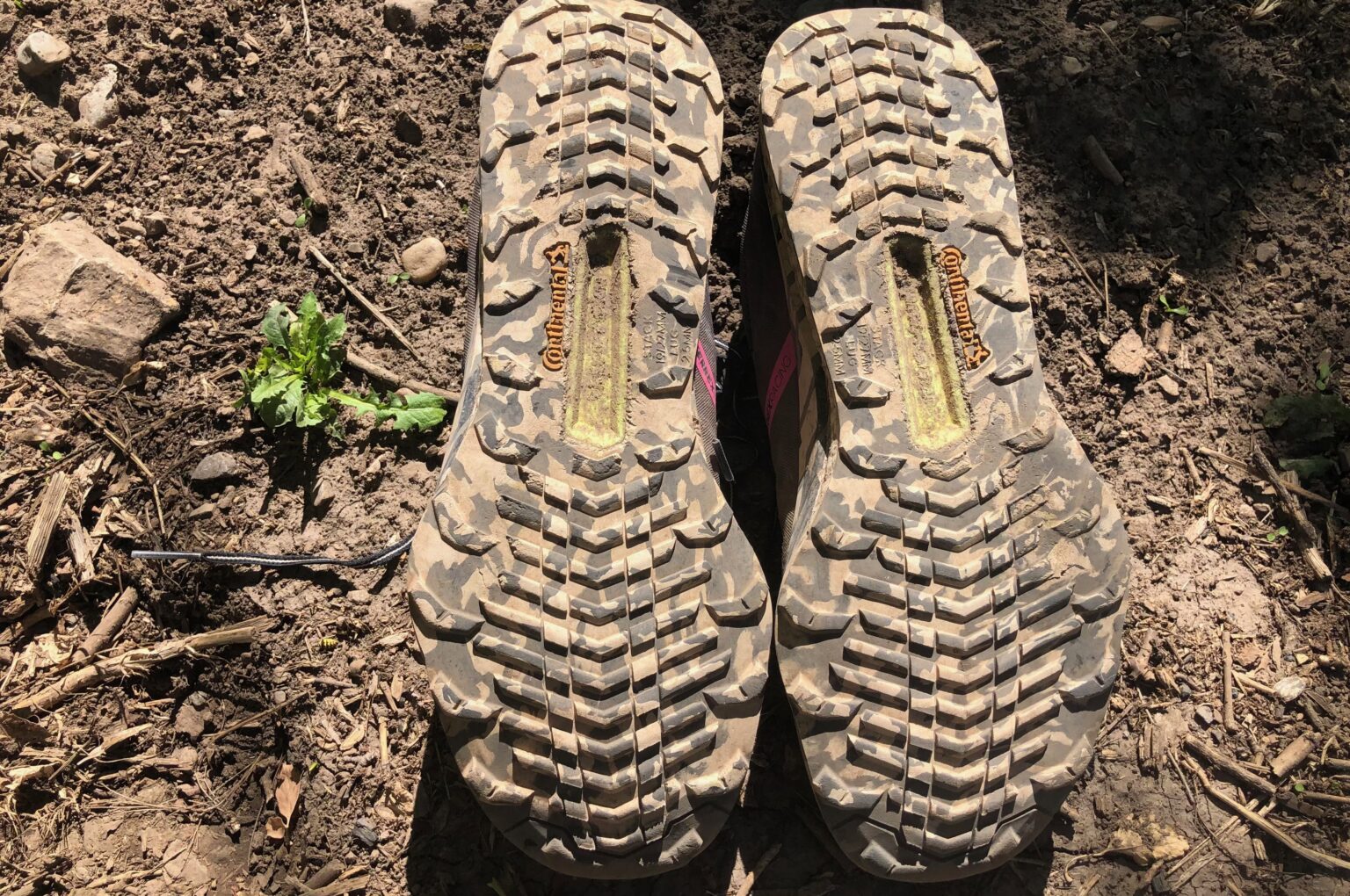
The rest of the shoe’s upper looks pretty much the same as it did out of the box, even after quite a few off-trail bushwhacks and lots of steep, technical running. The cushioning also still feels great — it might have packed out a little bit, but not enough to impact the shoe’s ride in any major way. Finally, the outsole has worn down about as much as I’d expect after almost 200 fairly rocky miles — there are a few minor signs of wear, but it still provides plenty of traction at this point.
Who’s It For?
For my running style and fit preferences, the Speed Ultra comes closer to being my “ideal” shoe than any other shoe I’ve run in recently. But with that said, the same won’t necessarily be true for everyone. The Speed Ultra doesn’t have much in the way of arch support, and the toe box (and overall fit) is definitely noticeably narrower than a shoe like the Altra Lone Peak or Olympus. So if you generally prefer supportive and / or wide shoes, the Speed Ultra might not be for you. The Speed Ultra’s durability is also somewhat of a limiting factor — I’m not sure my pair will last much beyond 200-300 miles, which isn’t great for a $160 shoe.
Still, if you like a precise-fitting, cushioned, and fast shoe that still has a bit of space for toe-splay, I personally think the Speed Ultra is pretty hard to beat. I wouldn’t necessarily recommend the Speed Ultra as a “one-shoe quiver” solely because it’ll probably wear out pretty fast, but if you’re looking for a long-distance racing shoe for all kinds of terrain, I’d definitely recommend giving the Speed Ultra a closer look.
Bottom Line
At the end of the day, I think the highest praise I can give the adidas Terrex Speed Ultra is that it has quickly become my go-to shoe for ultra-distance mountain races. As a Blister reviewer, I’m fortunate enough to get to try a whole lot of different shoes, and it’s pretty rare that I find a shoe that’s so much better than everything else on my shoe rack that I keep coming back to it every time I have a major race on the horizon. Currently, the Speed Ultra is that shoe. Sure, it could be even better with a few minor tweaks, but I think it’s certainly among the best long-distance racing shoes currently on the market, particularly for my feet and preferences. If you’re looking for a light, fast, and versatile race-day shoe, I think the Speed Ultra should definitely be on your shortlist.



How is the rock protection under foot in this shoe?
I am not aware of any. There are apparently some plastic rods embedded into the midsole for added stability and energy… I sometimes feel them.
I own these shoes and agree with the review. 2 points I would add. 1) The Continental outsole runs quite well on pavement, so they make a great door-to-trail shoe. Better on pavement and hard-packed trails than a Salomon Sense 4 PRO. My main issue with the shoe is that the last eyelets at the top are useless because then the upper really bites into your ankles. If you lace the shoe too tight it will cause that issue. The material used for that section of the upper has no padding. After a few runs I was able to find a sweet spot for my lacing… but at first it was painful on my feet/ ankles. Nonethless I will buy this shoe again for all its other qualities.